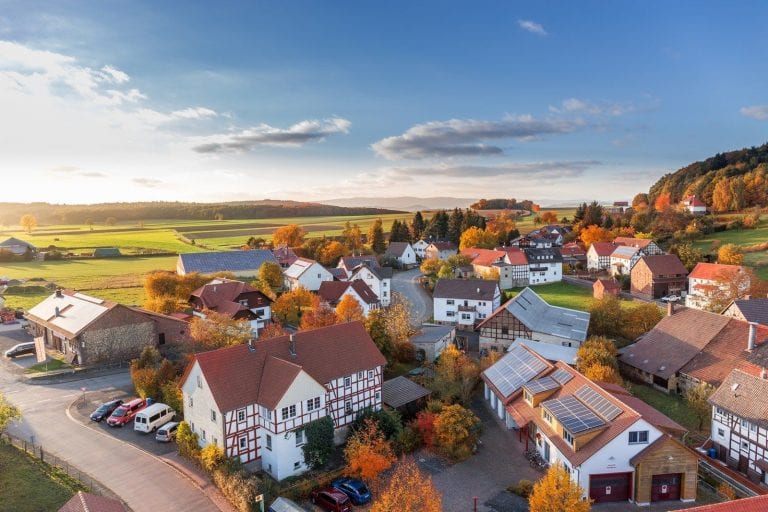Well, the time to buy an investment property on a golf course is now, according to real estate experts.
Although interest in golf course properties sagged after the 2008 recession, the strong global economy of recent years has propped up the market once again.
So with this buying opportunity, can investors find an opening to create significant value and profit in this niche?
Here are three things you need to know about golf course properties before making a significant investment.
#1: Location Is Lifestyle

When looking to buy an investment property in a golf course community, it is vital to know the area that surrounds the course and what it has to offer a potential buyer.
For a client to make the ultimate decision and buy the investment property, they will have to envision their life in and out of the home for it to become a desirable place to live.
Some buyers want the social aspect of the golf club lifestyle, but don’t want to play golf every day. For those clients, the lifestyle that the area can provide is the drawing point of the property.
When looking to create the story that will sell the property, start with the epicenter of the golf community; the clubhouse. Most golfing communities have a spectacular clubhouse that can offer a variety of amenities that are true attractions that have nothing to do with golf.
From tennis courts to restaurants to outdoor pools, a golf community’s central focal point can present tons of family-friendly charms or for the childless couple, more adult-centric bonuses that allow them to enjoy their nights close to home – while enjoying drives on their clubs.
The next step is to find out what appeals to the potential buyer as you expand outward from the house. It may seem simplistic, but knowing the interests and desires of the clients on a day-to-day level could help seal a purchase.
#2: Information Is the Extra 2%

Time for a quick metaphor: Back at the turn of the decade, Major League Baseball’s Tampa Bay Rays were a team competing in an unfair game. They didn’t have enough money to compete with champions like the Boston Red Sox and New York Yankees, so they had to rethink how they did everything.
The owner of the club came up with a philosophy that the Rays would have to gain an informational advantage that he called “The Extra 2%.” Tampa Bay’s strategy that took them to a World Series could be the secret in unlocking a major sale.
Before you buy an investment property, it is vital that you attempt to gain that extra 2% for an informational standpoint. You should know everything from the expected tax rate of the property to the initiation fee of the golf club. Don’t let there be any surprises that could cost you thousands of dollars as you try to resell your property.
And don’t forget that a sale can fall apart because of those hidden fees. It may take a bit of time to create a full picture but you want to give a potential buyer the complete image of what living at that location will cost them long term.
Golf communities bring on costs that aren’t usual for other neighborhoods. Families can expect to pay monthly club dues, property taxes, and homeowner fees. Members of the club may also be expected to pay for new and upcoming projects at the clubhouse. These fees add up and can kill a deal, so take the time and find out that extra 2% before you make that investment.
#3: Know Your Regulations

Residents that purchase a property in a golf community are typically expected to follow regulations. Those restrictions could present issues for real estate investors as well because if you want to update or renovate your purchase, there could be a mountain of red tape to cut through before you can shape the property as you wish.
Even after you finish getting the property into shape, you’ll need to make sure that buyers completely understand the rules they are bound to, because they’ll be expected to follow them through the life of their ownership.
Perhaps the biggest requirement is if the owners must be members of the golf club. This could severely cut your pool of potential buyers as well, so it could be wise to look for properties that exist in communities that do not require club membership.
The flip side to this is if owners are required to sign up for a membership, then you know what happens in the case of selling the property. Most clubs force the owner to continue paying fees until the house sells which could create months, if not years, of additional payments.
Sticking to the Rules
Buyers need to know upfront what is expected from them when they buy the house in the golf course community. And if they need to know, then you should definitely know how to factor that into the story of selling your property.
But, most importantly, understanding the rules of building, selling and renovating could save you from falling into a poor investment. Did you know that buying an investment property in a golf course doesn’t mean that the golf course will stay there forever? Some golf communities have agreements that state the land of a golf course can only be a golf course, but others do not.
Owners of a golf course can be tied to a restriction in their deed that keeps the golf course protected but some owners are not bound to keep the land as a golfing playground. In those instances, the owners can tear up the course and turn it into tracts for housing.
This potential problem could come as a dramatic surprise that costs you thousands in property value if the golf course goes belly up. Golf course properties that lose the golf course could see up to a 25% drop in value once the news gets out that the 18th hole is about to become four one-acre plots.
This article has been contributed by Jordan Fuller.